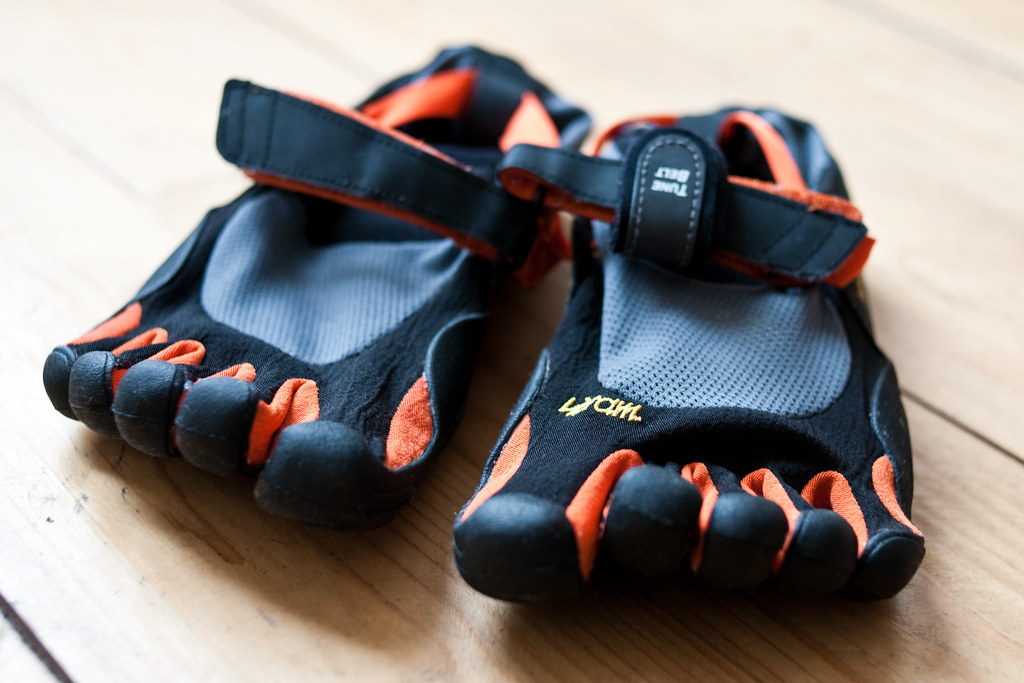Barefoot running shoes are a unique type of footwear that has gained popularity in recent years.
They are often referred to as ‘minimalist’ shoes because they have a very low profile and minimal cushioning.

What Are Barefoot Shoes?
Barefoot running shoes typically have a very thin sole, no arch support, and a wide toe box that allows the toes to spread out naturally. ‘Minimalist’ shoes have a heel drop of 0-4mm, while traditional running shoes have a high heel drop (10-12mm). Soles are thinner on barefoot shoes (3-5mm) compared to their classic counterparts (20-30mm).
| Metric | Traditional Shoe | Barefoot Shoe |
|---|---|---|
| Heel Drop | High (10-12mm) | Low (0-4mm) |
| Arch Support | Yes | No |
| Toe Box | Narrow | Wide |
| Sole Thickness | Thick (20-30mm) | Thin (3-5mm) |
| Weight | Heavy | Light |
| Flexibility | Stiff | Flexible |
According to a study published in the Journal of Sport and Health Science, “barefoot running has been associated with a reduced risk of injury, improved running economy, and increased sensory feedback.” Many runners believe that barefoot running shoes can help improve their form and reduce the risk of common running injuries. However, it’s important to note that barefoot running shoes are not for everyone and should be used with caution.
There are many different types of barefoot running shoes on the market, each with its own unique features and benefits. Some shoes have separate toe pockets to allow for individual toe movement, while others have a wider toe box to allow for natural foot splay. When choosing a pair of barefoot running shoes, it’s essential to consider your individual needs and preferences to find the right fit.
What Are Barefoot Running Shoes?
Barefoot running shoes are a type of footwear that is designed to mimic the feeling of running barefoot while still providing some protection and support for the feet. These shoes are built with a thin, flexible sole that allows for a more natural foot movement and a closer connection to the ground.
Minimalist Shoe Definition
The term “barefoot running shoes” is somewhat of a misnomer, as true barefoot running involves no shoes at all. However, these shoes are designed to provide a similar experience to running without shoes, while still offering some protection and support for the feet. Barefoot running shoes typically have a very thin sole, no arch support, and a wide toe box that allows the toes to spread out naturally.
Minimalist Shoe History
The concept of barefoot running has been around for centuries, but it wasn’t until the early 2000s that barefoot running shoes began to gain popularity. In 2002, Nike introduced the Free, a shoe that was designed to mimic the feeling of running barefoot. Since then, many other companies have followed suit, creating their own versions of barefoot running shoes.
Proponents of barefoot running and this type of running shoe argue that they can help improve running form and reduce the risk of injury. By allowing the feet to move more naturally and promoting a midfoot or forefoot strike, they can help reduce the impact on joints and muscles. However, it is important to note that there is still some debate over the effectiveness of barefoot running and barefoot running shoes, and some experts caution that they may not be suitable for everyone.
4 Key Differences Between Traditional And Minimalist Shoes
1. Wider Toe Box On Barefoot Shoe
It has a wider toe box compared to traditional running shoes. This allows the toes to splay naturally, which can improve balance and stability during runs. Traditional shoes, on the other hand, tend to have a narrower toe box, which can lead to discomfort, blisters, and even toe deformities over time.
2. Heel Drop Lower On Minimalist Shoe
Low or zero heel drop, means there is little to no difference in height between the heel and the toe of the shoe. This encourages a more natural running gait, as the foot lands more towards the midfoot or forefoot rather than the heel. Traditional running shoes, on the other hand, often have a higher heel drop, which can lead to heel striking and increased impact on the joints.
3. Thinner Soles On Barefoot Shoes
This type of running shoe typically has thinner soles compared to traditional running shoes. This allows for more ground feel and sensory feedback, which can help improve form and reduce the risk of injury. Traditional shoes, on the other hand, often have thicker soles with more cushioning, which can reduce ground feel but also provide more shock absorption.
4. Barefoot Shoes Made Of Lighter/More Flexible Material
Minimalist running shoes are often lighter and more flexible compared to traditional running shoes. This allows for a more natural range of motion and foot flexibility during runs. Traditional shoes, on the other hand, can be heavier and stiffer, which can limit foot movement and flexibility.
Conclusion
Overall, barefoot running shoes are a unique type of footwear designed to mimic the experience of running on foot alone while still providing some protection and support. They are typically lightweight, flexible, and have minimal cushioning to allow the feet to move and flex more naturally.
While some runners swear by them and claim they have improved their running form and reduced injuries, others find them uncomfortable or too challenging to use. It’s important to remember that everyone’s feet and running styles are different, so what works for one person may not work for another.
If you’re interested in trying barefoot shoes, it’s important to start slowly and gradually build up your mileage to allow your feet and muscles to adapt. You may also want to consider consulting with a running coach or podiatrist to ensure that you’re using the correct form and technique.
Ultimately, whether or not barefoot running shoes are right for you will depend on your individual preferences, goals, and needs as a runner. By researching, trying out different shoes, and listening to your body, you can make an informed decision about whether or not to incorporate minimalist footwear into your training regimen.
FAQs:
Q: Are barefoot running shoes good for beginners? A: Barefoot running shoes are not recommended for beginners who are not used to running without support. It's important to gradually transition to barefoot running shoes to avoid injury.
Q: Can barefoot running shoes prevent injuries? A: While some runners report fewer injuries when using barefoot running shoes, there is no guarantee that they will prevent all injuries. It's important to use proper form and technique when running to reduce the risk of injury.
Q: Do I need to wear socks with barefoot running shoes? A: It's up to personal preference whether or not to wear socks with barefoot running shoes. Some runners prefer to wear socks for added comfort and to prevent blisters, while others prefer to go sockless for a more natural feel.
Q: How do I choose the right size for barefoot running shoes? A: t's important to measure your feet and refer to the manufacturer's sizing chart when choosing barefoot running shoes. It's also recommended to try on the shoes and walk or run in them to ensure a proper fit.
Q: Can I use barefoot running shoes for other activities besides running? A: Barefoot running shoes can be used for other activities such as walking, hiking, and weightlifting. However, it's important to note that they may not provide enough support for high-impact activities such as basketball or tennis.


